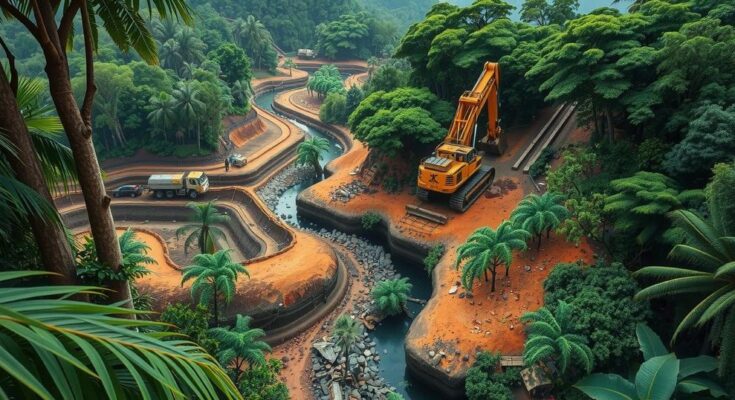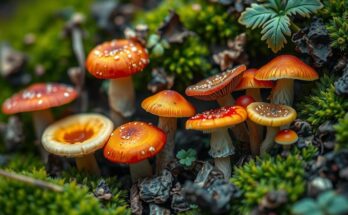A recent study reveals that artisanal gold mining in Peru’s Amazon has caused significant peatland destruction, releasing substantial carbon emissions. With the rise of illegal mining, threats to both the ecosystem and local communities are growing. The importance of regulatory measures to protect these peatlands is highlighted as a pressing necessity.
The recent study highlights the detrimental impact of small-scale gold mining on the Amazon rainforest in Peru, particularly regarding peatland destruction. Approximately 70 percent of the country’s artisanal gold production occurs in the Madre de Dios region, which serves as a primary employment source for around 30,000 individuals, especially following economic instability post-2008. However, much of this mining is illegal and contributes significantly to deforestation in the area.
Peatlands, which are crucial for carbon storage, are being severely affected by gold mining operations. These ecosystems hold seven times more carbon than the trees in the Amazon rainforest. Sadly, researchers found that over 550 hectares of peatland have been lost over the past 35 years, resulting in the release of between 0.2 and 0.7 million tons of carbon into the atmosphere, with more than half of the loss occurring in the last two years alone.
Currently, only about 9 percent of mining activities take place in peatlands, though this figure is projected to increase dramatically over the next decade. If these trends persist, it is estimated that peatland mining could account for 25 percent of total mining by 2027, leading to a potential carbon release equivalent to the annual emissions from millions of vehicles.
Dr. John Householder, the lead author of the study, indicated that increased accessibility of remote mining areas is exacerbating the problem due to insufficient law enforcement. He cautioned that further destruction could result in permanent damage to the peatlands, which would have grave environmental, social, and economic repercussions for the region.
Additionally, Dr. Householder emphasized the scarcity of ground data related to these peat deposits, stressing that significant portions of peat could vanish without scientific documentation due to human activities. Furthermore, determining the exact amount of gold originating from these peatlands is nearly impossible, as it is extracted by unregulated and illegal operations, making tracking its journey to the global market exceedingly challenging.
As one of the world’s top gold producers, Peru faces the complex reality that a vast amount of its gold is obtained illegally, much of it likely originated from the ancient peatlands of Madre de Dios. This phenomenon emphasizes the importance of protecting these critical ecosystems from further exploitation, underscoring the urgent need for regulatory measures and sustainable practices in the industry.
The findings from this study bring to light the urgent need to address the environmental impact of artisanal gold mining in the Amazon. The destruction of peatlands not only contributes significantly to carbon emissions but also poses lasting threats to the ecosystem and local communities. Increased regulation and protection of these precious areas are vital to mitigate these harmful consequences.
Original Source: www.iflscience.com




